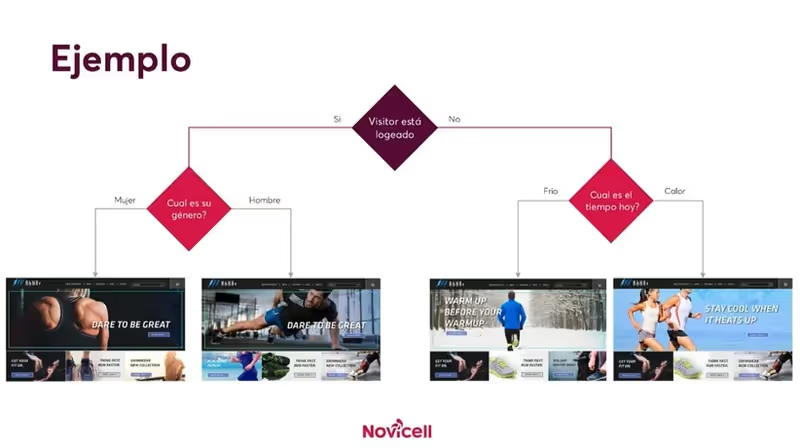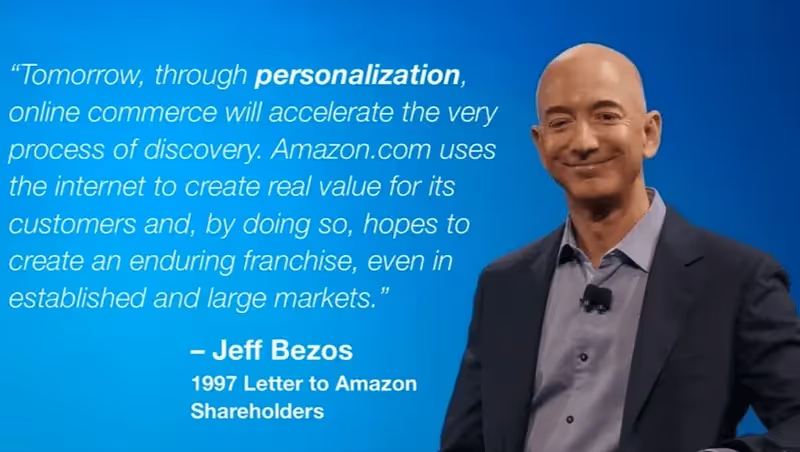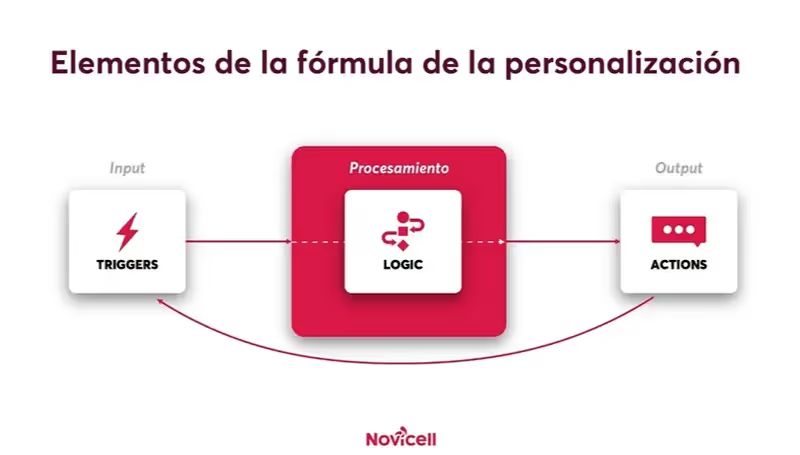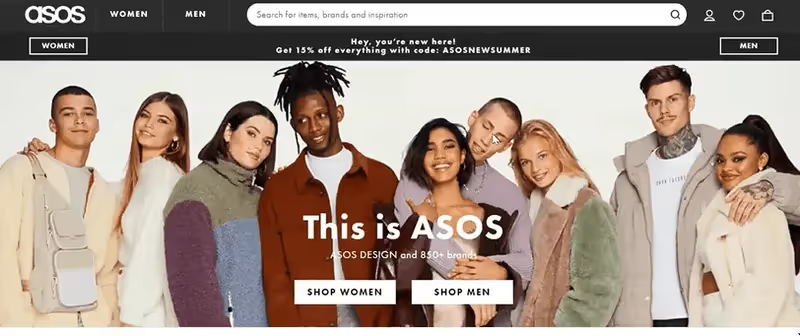How to personalize the user experience

Last June, at Novicell, we offered a webinar on the importance of personalizing the user experience. You can see The video of the full webinar, in this post we give you a summary of what was discussed.
What do we mean when we talk about personalization?
We know that no user is the same, even if many of them have things in common. That is why we must personalize the user experience, to be more relevant to them and that our business achieves its objectives.
In the digital world, we have tools that allow us to reach users in a more personalized way, making Increase the chances of conversion. For example, we could show content focused on a specific genre or depending on the temperature at that time, or offer relevant messages for each audience, depending on each market.

At Novicell, we think it's best to customize step by step, without wanting to personalize everything. It can be customized from something very basic, such as if the user comes from the UK, that the website appears directly in English or, for example, if we identify that the user has the characteristics of a buyer persona in particular, we can show you some products that may interest you more.
Does it make sense to invest in personalization?
The creator of Amazon, Jeff Bezos, has been betting on it for a long time. With personalization The discovery process is accelerated of what the user is looking for.

Personalization It helps to generate business, companies like Deloitte, McKinsey & Company, BCG say it: investing in personalization It impacts in a positive way in your business.
The elements and parameters of personalization
These are the elements that we must have to be able to customize:

When something happens (Trigger) must trigger a action based on a processing, to a logical.
Triggers can be events such as clicking a specific button, opening an email, registering, buying a product, etc.
What Asos does is that when you have already visited the men's clothing page, when you return to its Home page, you are redirected to the men's clothing page, without going through the Home page where you have to decide if you want to see women's or men's clothing. This is a simple implementation, but it allows them to skip a step in the sales funnel, with the advantages that this entails.

To personalize, you can change copies, change the image according to the type of user, suggest products that are related to your interest based on the navigation you have done. El Upselling personalized makes it more relevant, as well as personalized offers.
Another way to customize is to show, hide or order items according to the user's interest. One action that is usually done is to offer discounts to the user a few days after they have added a product to the shopping cart but have not finished buying.
Information parameters
But on what basis can we carry out personalization exercises? Here are some of the parameters that we can take into account:
- Behavior: Pages visited, web searches, clicks, downloads, first visit...
- Tech: Device type, screen size...
- Canal: Origin of the visit (social networks, email campaign, advertisement...)
- Localization: Market, Country, City...
- Product: Interest in products, previous purchases...
- Weather and Meteorology: Day of the week, temperature of the search area...
- Customer Data: Average ticket, customer segment...
Types of customization logic
There are two types of logic when customizing:
- Prescriptive
With audiences and rules to be decided by people thanks to the knowledge we have in a company (based on having carried out the buyer persona exercise and the customer journey, for example), we can define personalized routes through which we believe that the user will convert more.
- Predictive
Through algorithms that can collect and analyze data and then customize based on it.
The Future of Personalization
The future of personalization is directly related to artificial intelligence. Microsoft has a content personalization tool with artificial intelligence, but they are not the only ones.
Nowadays, this type of AI customization is already being incorporated into CMS, as is the case of Sitecore, the content manager focused on personalization. The system finds correlations between content and user behavior and personalizes content through patterns.
The personalization of the user experience It's every time more relevant in companies. At Novicell, we recommend that you customize it little by little but in an agile way, that is, to carry out small actions to learn quickly and to perfect the personalization to analyze the impact of the business.
How can we help you?
If you need more information do not hesitate to contact us.
Cómo podemos ayudarte
Consulta los servicios con los que te ayudaremos a conseguir tus objetivos digitales.
